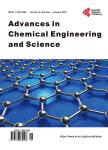Effect of Wetting on the Ability of Nanomaterials to Act as Effective Catalysts
Effect of Wetting on the Ability of Nanomaterials to Act as Effective Catalysts作者机构:David Crawford School of Engineering Norwich University Northfield VT USA School of Engineering University of Vermont Burlington VT USA
出 版 物:《Advances in Chemical Engineering and Science》 (化学工程与科学期刊(英文))
年 卷 期:2016年第6卷第5期
页 面:541-552页
学科分类:081704[工学-应用化学] 07[理学] 070304[理学-物理化学(含∶化学物理)] 08[工学] 0817[工学-化学工程与技术] 0703[理学-化学]
主 题:Catalyst Nanomaterial Wetting
摘 要:The ability of some nanostructured materials to perform as effective heterogeneous catalysts is potentially hindered by the failure of the liquid reactant to effectively wet the solid catalyst surface. In this work, two different chemical reactions, each involving a change of phase from liquid to gas on a solid catalyst surface, are investigated. The first reaction is the catalyzed decomposition of a H2O2 monopropellant within a micro-chemical reactor chamber, decorated with RuO2 nanorods (NRs). The second reaction involves the electrolysis of dilute aqueous solutions of H2SO4 performed with the cathode electrode coated with different densities and sizes of RuO2 NRs. In the catalyzed H2O2 decomposition, the reaction rate is observed to decrease with increasing catalyst surface density because of a failure of the liquid to wet on the catalyst surface. In the electrolysis experiment, however, the reaction rate increased in proportion to the surface density of RuO2 NRs. In this case, the electrical bias applied to drive the electrolysis reaction also causes an electrostatic force of attraction between the fluid and the NR coated surface, and thus assures effective wetting.



